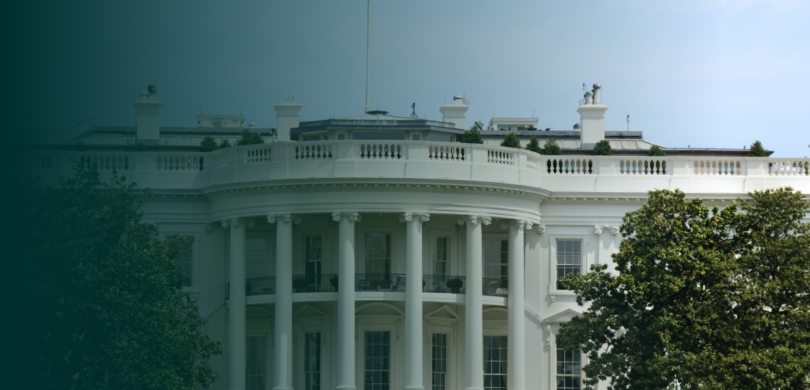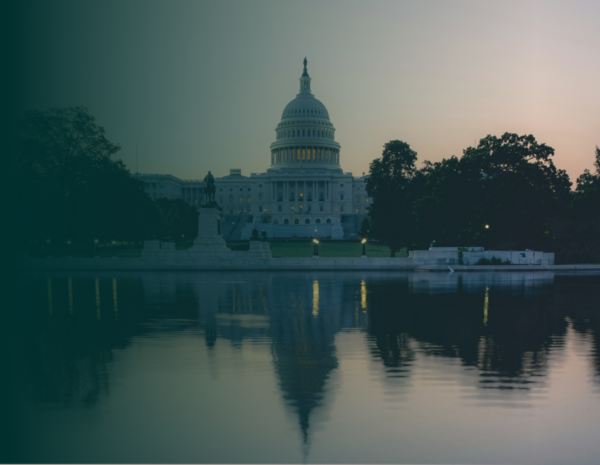In the United States, presidential primaries are more than preliminary contests. They’re reflective of democratic ideals, offering a voice to citizens. As we near the 2024 elections, understanding the presidential primaries is important. This guide explores the history, processes, and significant impact of the primaries.
What is the Presidential Primary?
Presidential primaries are a critical phase in the American electoral process. Primaries are distinct from general elections. They are internal party events, where party members select their candidate for the general election. Primary elections focus on the party’s base. As such, they influence the party’s policy direction and success in the general election.
A key difference between primaries and general elections is the voter base. Primaries tend to attract more partisan voters. General elections target a wider electorate including independents and third party members. Depending on the state, primaries vary in their procedure and influence.
State-level decisions in primaries play a crucial role in shaping national politics. Early states like Iowa and New Hampshire can significantly impact a candidate’s momentum. On Super Tuesday, many states hold primaries on the same day. Super Tuesday can dramatically alter the race by consolidating leads for frontrunners or offering underdogs a chance to surge.
The Presidential Primary Process
The primary process is a complex, involving several key steps. This process is not just about voting; it’s a multifaceted campaign strategy.
Steps in the Presidential Primary Process
Declaring Candidacy
The journey begins with an individual declaring their intention to run for president. Declaration is usually a high-profile event, setting the tone for the candidate’s campaign.
Campaigning and Debates
Candidates then embark on extensive campaigning, traveling across the country to garner support. Debates play a critical role. They offer candidates a platform to outline their policies in contrast with their opponents.
Fundraising
Raising funds is crucial for advertising, organizing rallies, and campaign management. Candidates often rely on a mix of small individual donations and larger contributions.
Voter Outreach
Engaging with voters is key. This includes grassroots efforts and digital outreach. Traditional methods, like phone banking, remain an effective strategy as well.
Primary Elections and Caucuses
The actual voting process varies from state to state. While primary elections involve casting ballots, caucuses are more interactive. They might involve local meetings where supporters debate and decide on their candidate.
Winning Delegates
The goal of primaries and caucuses is to win delegates. Delegates support the candidate at the national party conventions. The number of delegates a candidate wins is proportional to their primary performance.
National Conventions
Each party holds a national convention where delegates nominate their presidential candidate. This event also serves to unify the party and rally support for the general election.
Differences Between Political Parties
The Democratic primaries often use a proportional representation system. In this system, delegates are allocated in proportion to the vote each candidate receives. They also have superdelegates, who are free to support any candidate.
The Republican primaries vary from state to state. Some states use a winner-takes-all approach, where the candidate with the most votes gets all delegates. Others use proportional representation.
Campaign strategies and voter outreach are vital throughout this process. Candidates must tailor their strategies to different states and demographics. What resonates in one region might not in another. Data analytics can be used to target voters. A strong online presence is also key.
The Party Conventions
Party conventions are a critical juncture in the American political process. They merge historical significance with contemporary strategy. These conventions have evolved from 19th-century decision-making forums into today’s symbolic events. Today, conventions emphasize party unity and kickstart the general election campaign.
Historical Significance and Modern Transformation
Historically, conventions were pivotal in selecting party nominees. Today, since nominees usually decided during the primaries, conventions play a different role. They focus on party unification and presenting a cohesive vision. In the digital era, conventions have transformed into multimedia events. Live broadcasts and social media engage a broader audience and build momentum.
Role in Unifying the Party
Conventions are essential for reconciling post-primary differences and uniting the party. Party leaders, former rivals, and emerging figures give high-profile speeches. The event also serves to finalize the party platform, outlining policy goals and principles for the election.
Culmination of the Convention
The highlight of the convention is the formal nomination of the presidential candidate. This nomination is often marked by a key address that sets the campaign’s tone. This speech is a crucial moment for the nominee to present their vision and strategy to the nation.
The Caucuses
Caucuses are a unique and traditional aspect of the American presidential nominating process. While primaries are more common, several states, notably Iowa, choose caucuses. This is due to historical, political, and logistical reasons.
Why Some States Prefer Caucuses
Historical Tradition
For some states, caucuses are a long-standing tradition. They have been a part of their political process for decades, if not centuries. Caucuses represent a historical continuity.
Political Strategy
Smaller states may prefer caucuses as they can garner more national attention. The intensive, local nature of caucuses often attracts significant media coverage. This is true especially in early-voting states.
Community Engagement
Caucuses encourage active participation and discussion among party members. They foster a sense of community and deeper political engagement.
Grassroots Nature of Caucuses
Caucuses are fundamentally grassroots. They involve gatherings where party members meet, discuss, and make decisions about their preferred candidate. Unlike primaries, caucuses are open and require public declaration of support. This process allows for direct discussion, debate, and persuasion among party members. As such, caucuses are more interactive and communal than primaries.
Differences from the Primary Voting Process
Voting Method
In primaries, voters cast secret ballots, similar to general elections. In caucuses, however, participants physically group themselves according to their candidate preference. This often leads to visible, public demonstrations of support.
Delegate Allocation
The process of delegate allocation in caucuses can be more complex and interactive. The caucus process goes beyond voting for ones preferred candidate. Caucus delegates also engage in negotiations and realignments. This is especially true in precincts where a candidate doesn’t meet a certain threshold of support.
Time and Involvement
Caucuses require a significant time commitment and active participation. By contrast, primaries are relatively quick and private.
The Primary Votes
Primary votes are crucial in the U.S. presidential nominating process. They impact delegate allocation, determining the party’s nominee.
Tallying Votes and Delegate Allocation
Primary votes are tallied similarly to those in general elections. These votes translate to delegate allocation for the national conventions.
Delegate allocation varies by state and party. Some use a proportional system. Others, especially in the Republican Party, may use a winner-takes-all approach. This process is crucial; the total delegates determine a candidate’s potential for nomination.
Impact of Early Primary States
States like Iowa and New Hampshire, though small, wield significant influence. This is due to their early primary dates. Success in these states can create momentum, affecting media coverage and voter perception. Success in early primaries can be pivotal for a candidate’s national campaign.
Awarding Delegates
The process of awarding delegates is a central aspect of the presidential primaries. Delegates determine which candidate will secure the party’s nomination.
Selection and Duties of Delegates
Delegates are party members chosen for their loyalty and active involvement. Their selection varies by state and party. Delegate selection often involves a series of local and state conventions or meetings.
They’re responsible for representing their state’s choice at the national party convention. Delegates cast votes based on voter preferences reflected in their states’ primary or caucus.
Pledged vs. Unpledged Delegates
Pledged delegates are bound to supporting a specific candidate at the convention. This support must reflecting the results of the primary or caucus in their state. Delegate allocation is usually proportional to the vote each candidate receives.
Unpledged delegates are also known as “superdelegates” in the Democratic Party. These delegates are not bound by primary or caucus results and can support any candidate. They are typically party leaders, elected officials, or other influential party members. The Republican Party has fewer unpledged delegates compared to the Democrats.
Scenarios Where Delegates Are Decisive
Delegates become particularly decisive in close races. In many close races, no candidate has a clear majority of pledged delegates. In such scenarios, the role of unpledged delegates can be crucial.
The national convention becomes contested or brokered if no candidate secures a majority on the first ballot. In this case, pledged delegates may be released from their commitments. At this point, negotiations among candidates, delegates, and party leaders play a critical role in deciding the nominee.
Open vs. Closed Presidential Primaries
The U.S. presidential primary system features two main types of primaries: open and closed. Each has its advantages and disadvantages, affecting voter turnout and candidate strategies.
Open Primaries
In open primaries, voters can participate in either party’s primary regardless of their own party affiliation. Texas is one such state that operates under an open primary system.
The advantages of open primaries include increased participation and broader appeal. Open primaries allow independent voters to participate, potentially increasing voter turnout. Further, candidates may need to appeal to a wider audience, fostering moderate or cross-party appeal. On the other hand, open primaries increase the risk of crossover voting. Members of one party may vote in the other party’s primary to influence the outcome.
Closed Primaries
Closed primaries restrict voting to registered party members. As such, they ensure that only dedicated party members can influence the nomination. New York is an example of a state with a closed primary system.
Closed primaries are beneficial because they prevent crossover voting and strengthen party loyalty. They protect against strategic voting from the opposition party. Further, closed primaries encourage voters to register with a specific party. Because of this, they could potentially strengthen party loyalty.
Disadvantages of closed primaries include lower turnout and the exclusion of independent voters. Because they exclude independents and third party members, closed primaries can lead to lower voter turnout.
2024 Presidential Primary Election Dates
The 2024 presidential primaries begin in early January and continue through June. National party conventions are held in July and August. Click the button below to download a list of key primary dates.
Comparisons to Past Election Cycles
- The 2024 cycle continues the trend of early primaries and caucuses. This timing plays a significant role in candidate momentum.
- Super Tuesday remains a pivotal day in the primary calendar. On March 5, 17 states will hold elections.
- The spread of primary dates from January through June allows for an extended campaign period. This is similar to past cycles.
- Iowa and New Hampshire maintain their roles in shaping the early narrative of the race.
Get Started With Plural
Plural is the tool of choice for policy teams looking to get and stay ahead in the legislative landscape in 2024. Get started with Plural today to:
- Access superior public policy data
- Be the first to know about new bills and changes in bill status
- Streamline your day with seamless organization features
- Harness the power of AI to gain insights into individual bills and the entire legislative landscape
- Keep everyone on the same page with internal collaboration and external reporting all in one place
2024 End-of-Session Report: New York
What were the key outcomes of the New York legislative session? Throughout the 2023-2024 session, the legislature considered 19,000+ bills. Learn more today.
2024 End of Session Report: Minnesota
What were the key outcomes of Minnesota’s legislative session? Throughout the 2023-2024 biennium, the majority Democratic legislature considered over 10,000 bills. Learn more today!
Guide to Preparing for Congressional Testimony
Effective preparation for Congressional testimony requires a meticulous blend of strategy, knowledge, and execution. Download now!



